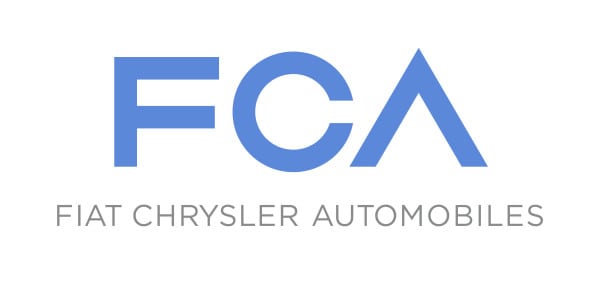Up to this point, since the bailout-buyout of Chrysler by Fiat in 2009, the companies have had their logos appear side-by-side on corporate correspondence and press materials. Now, they want to combine their corporate identities into one with a new logo.
Is it too soon for this move?
Fiat-Chrysler says that the new combination is to show that the total is more than just the sum of its parts. For Americans, however, this may be too much, too fast. Globally, it’s probably not a bad move, since Fiat is well-known in most markets outside of North America.
The new logo was created as an acronym for the Fiat Chrysler Automobiles corporate name: FCA. The logo itself, as you can see, is in the new-age minimalist design with a quasi-Arial-style font in blue. As an international logo, it is a good fit, though not exactly memorable. The trouble here is with the rich history Chrysler itself has here in the United States and Canada.
Chrysler is one of the oldest automakers in the U.S. and its current ownership by Fiat is not the first time it’s been owned by a foreign carmaker, having been owned by Daimler in 1988 – an owner/partnership which lasted until Daimler sold its shares in 2009. Despite this history of foreign ownership, most Americans see the company and its brands as being American. The vehicles built by the company are largely American in appeal – with most domestic sales being large sedans, SUVs, and pickup trucks.
The launch of a new logo is largely for corporate letterhead and correspondence as well as to appear on the company’s various brand sites, which include Chrysler, Jeep, Ram, Fiat, and so forth. So you won’t see this FCA logo on a vehicle.
Still, the question of whether this is too much, too soon for Americans to take, given the company’s status, is important. It’s very likely that the Chrysler brands will survive regardless and since the logo will not appear on things most everyday car buyers and owners would normally see, it probably won’t affect their branding much.
It does, however, solidify the company as being not owned by Americans any longer, which may be a bone in some auto journalists’ and enthusiasts’ stew.








